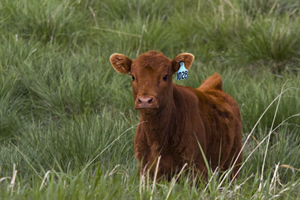Environmental Goods and Services: More Questions than Answers
This article written by Dr. Reynold Bergen, BCRC Science Director, originally appeared in the June 2017 issue of Canadian Cattlemen magazine and is reprinted on the BCRC Blog with permission of the publisher.
The beef industry takes pride in how forage, grazing and beef production benefit the environment. These environmental goods and services (EG&S) include carbon sequestration, plant and wildlife habitat, reduced soil erosion, watershed recharging, scenery, etc. While consumers pay for beef, the EG&S are free.
For instance, many ducks need grasslands and wetlands to nest and raise their young. Grasslands and wetlands also act like a sponge that absorbs excess moisture in wet years. A lot of grassland has been cultivated and/or wetlands drained to grow crops. This may have contributed to overland flooding and crop losses in recent wet years. If producers had been paid to preserve these grasslands and wetlands in recognition of the EG&S they provide (i.e. wildlife habitat and flood mitigation), would there have been fewer flood compensation payments?
Before beef producers can be paid for the EG&S they provide, we need to be able to measure them and figure out what they’re worth. A BCRC–funded project led by the University of Manitoba’s Dr. Kim Ominski was published in 2015 (Challenges and Opportunities in Estimating the Value of Goods and Services in Temperate Grasslands – A Case Study of Prairie Grasslands in Manitoba, Canada).
What they did:
The research team focused on Manitoba’s grasslands. In addition to forage value, they identified 20 potential EG&S, and estimated the value of eight of them (carbon sequestration, nutrient cycling, water quality, soil erosion control, soil formation, water treatment, recreation and aesthetics, and wildlife habitat). Forage and seed yields and prices were relatively easy to measure and value. The EG&S weren’t. For example, carbon sequestration data was limited, so they used data from grasslands at similar latitudes elsewhere in the world, and applied a carbon price from the Chicago Climate Exchange (this pre-dated Canada’s carbon taxes). The amount of nitrogen fixed by forage legumes was estimated and priced the same as urea. Other EG&S were even harder to estimate and value. Water quality and benefits from reduced water and wind erosion were based on a previous study of the upper Assiniboine River Basin in Saskatchewan and Manitoba. The data on how well grasslands remove excess nitrogen and phosphorus from the soil wasn’t strong, so data from forests was used instead. The rate of soil formation in grasslands had been measured elsewhere in the world, and were assumed to be similar in Manitoba. Recreation and scenery values were estimated from hunting revenues. Wildlife habitat values came from a federal report about burrowing owl habitat in Southern Alberta. Information from other international studies were used when no other estimates or values were available, and to supplement other data when appropriate.
What they learned:
A few key points were apparent. Firstly, only a third of the total value from Manitoba grasslands (33%) came from forage; the rest came from the EG&S. The largest EG&S contribution (42%) came from carbon sequestration. No other EG&S accounted for more than 10% of the total. The main thing this study found was how much we don’t know. We don’t have enough Canadian data to accurately estimate how much EG&S grasslands provide, and we don’t know what most EG&S are worth to society.
What it means:
Implementing an effective program to pay beef producers for EG&S will be challenging. Since existing national, regional and provincial level EG&S data is insufficient, how will EG&S be measured? If EG&S payments go to individuals, will EG&S be measured on each operation? Everyone knows someone whose operation isn’t as environmentally responsible as yours; should they be paid the same as you? What about producers who work hard to maintain habitat for burrowing owls or sage grouse but have fewer birds than last year? Will they be penalized because the birds haven’t stayed? Will producers be paid for carbon that was sequestered on native range a few million years before their grandparents immigrated, or just for newly seeded pastures?
Will EG&S payments come from public tax dollars? If they do, what expectations will accompany them? For example, will civilians be able to freely roam private property and enjoy the scenery their taxes helped protect, like in Europe?
Will EG&S be funded through the marketplace (e.g. consumer support for McDonald’s Sustainable Beef initiative), paid hunting, or groups like Ducks Unlimited who are supported by individuals who want to see duck populations habitats preserved?
To answer these questions, more research is needed to measure how forage and beef production practices impact greenhouse gas production and sequestration, soil health, watersheds and cycles, and plant and wildlife habitat. Regardless of how or whether producers are paid for EG&S, more knowledge of the EG&S that Canada’s beef producers provide will help the public understand that beef producers and environmentalists are often on the same side, and that Canada’s beef industry is environmentally sustainable.
Click here to subscribe to the BCRC Blog and receive email notifications when new content is posted.
The sharing or reprinting of BCRC Blog articles is typically welcome and encouraged, however this article requires permission of the original publisher.
We welcome your questions, comments and suggestions. Contact us directly or generate public discussion by posting your thoughts below.
